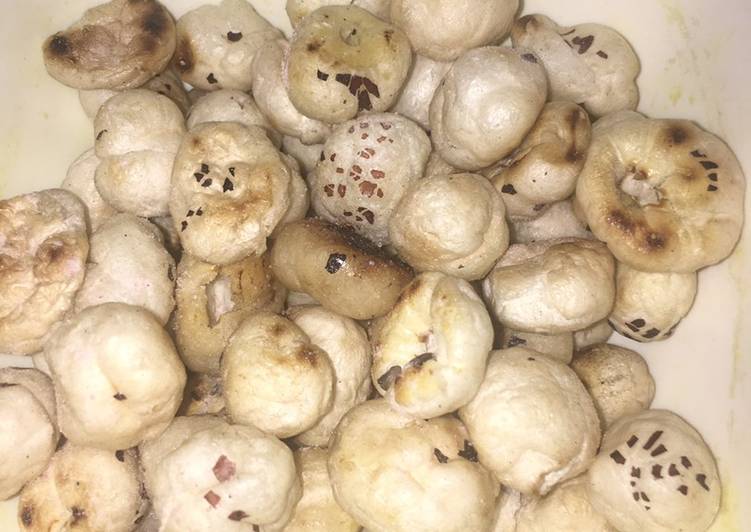
Hey everyone, I hope you’re having an amazing day today. Today, I will show you a way to prepare a special dish, phul makhana. It is one of my favorites food recipes. This time, I’m gonna make it a bit tasty. This is gonna smell and look delicious.
Phul makhana is one of the most favored of recent trending foods on earth. It’s easy, it’s quick, it tastes yummy. It is enjoyed by millions every day. Phul makhana is something that I have loved my whole life. They are fine and they look wonderful.
Phool Makhana is a good snack as well as a good source for calcium. Good for Blood Pressure The high potassium and lower sodium contained in phool makhana is good for a person with hypertension. Phool makhana is rich in magnesium which is helpful in controlling the flow of blood and oxygen and remove all the problems related to heart disorder and attack. There are various ways to consume Phool makhana.
To get started with this particular recipe, we must first prepare a few components. You can cook phul makhana using 3 ingredients and 3 steps. Here is how you can achieve that.
The ingredients needed to make Phul makhana:
- Get 1 cup Phul makhana/fox nut
- Get 1 tbsp ghee
- Make ready 1 pinch salt
Makhane Ki Sabzi is a delicious way to include foxnuts in a festive feast like Navratri or Janmashtmi. Roasted makhana recipe - makhana or phool makhana or lotus seeds is an ingredient I have seen often living in India. I have had makhana kheer before and also had the roasted makhana many times. We also make sabzi with makhana.
Instructions to make Phul makhana:
- In a kadhai Take ghee.
- Add salt in it
- Add phul makhana and roast it till red.dish is ready.
I have had makhana kheer before and also had the roasted makhana many times. We also make sabzi with makhana. I have also seen makhana being served as prashad. Introduction Makhana is the most popular name in India for Euryale ferox, a flowering plant classified in the water lily family (Nymphaeaceae) and the only extant species in the genus Euryale. It is extensively grown in marshy wetlands, tanks, ponds and lakes, and harvested for its seed.
So that is going to wrap it up with this exceptional food phul makhana recipe. Thanks so much for your time. I am confident you can make this at home. There’s gonna be more interesting food at home recipes coming up. Don’t forget to bookmark this page on your browser, and share it to your family, colleague and friends. Thank you for reading. Go on get cooking!

